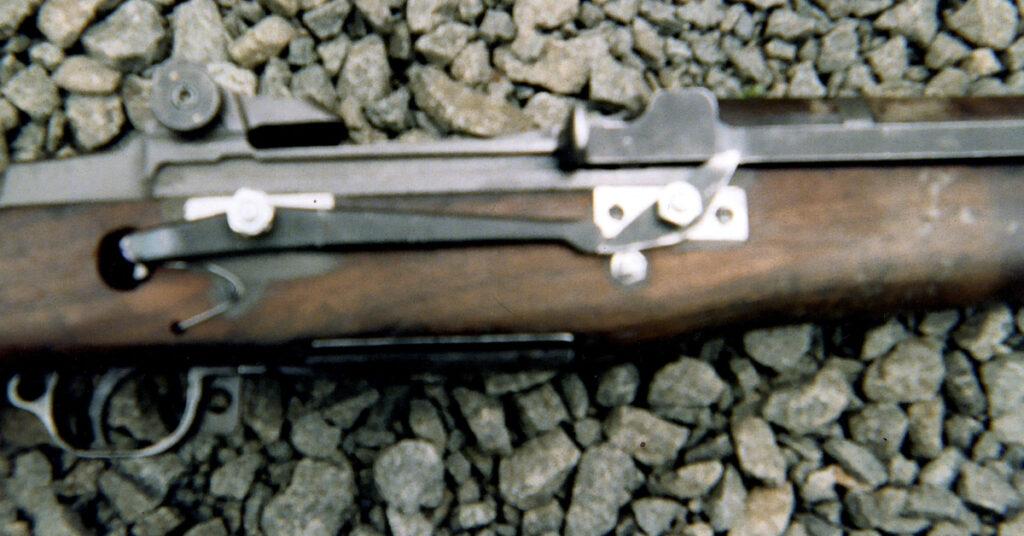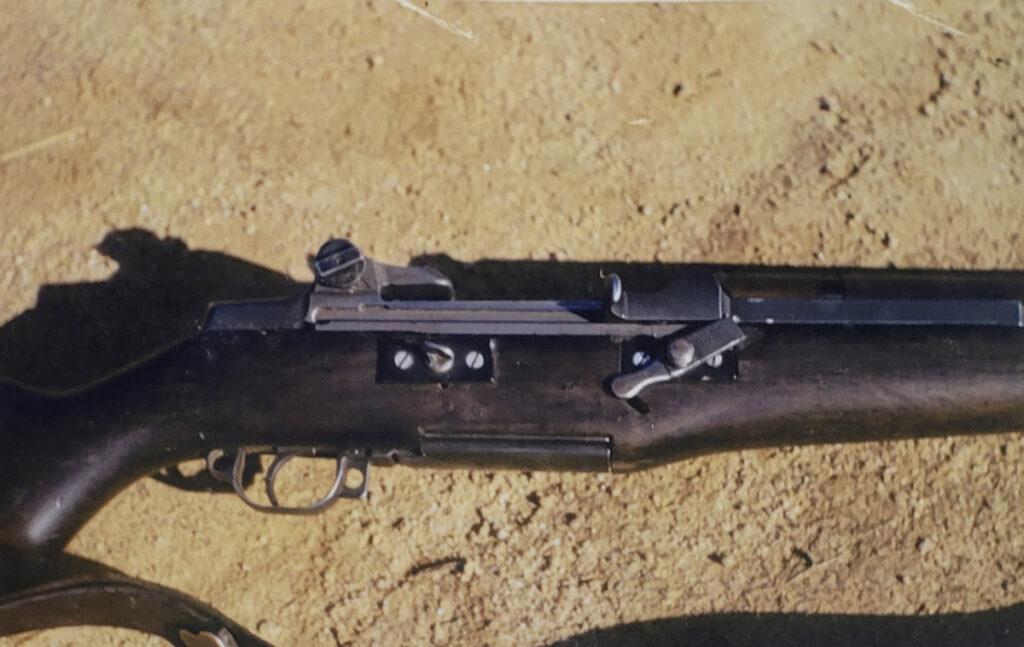-
-
The Following 20 Members Say Thank You to Mark in Rochester For This Useful Post:
25-5,
42rocker,
Bill Hollinger,
Bob Womack,
CINDERS,
eb in oregon,
fboyj,
fjruple,
frankderrico,
HOOKED ON HISTORY,
jond41403,
Jonzie,
lgr1613,
Low & Slow,
Ovidio,
RAM1ALASKA,
Steve762,
tiriaq,
Tom in N.J.,
Zeke55
-
11-26-2024 12:13 PM
# ADS
Friends and Sponsors

-
Advisory Panel


Those would be about as effective as the mods where guys filed down the hammer horns and the rifle ran auto... Eight rounds all at once and all over the place.
-
-
Contributing Member


Apparently they thought it was effective
During our many conversations, Hal stated to me that he always sent at least two of his modified rifles out with each patrol. In use, the modified rifles provided good, reliable service. They put lots of rounds in the direction of the enemy and helped keep their heads down.
-
The Following 5 Members Say Thank You to Mark in Rochester For This Useful Post:
-
Legacy Member

Doing a quick review of the "selective fire Garands" it said that it stopped firing as soon as you took your finger off the trigger, or you emptied the mag. Sounds like it was not a mag gun. Interesting. As story said have a license in place before you do something like this.
Later 42rocker
-
The Following 2 Members Say Thank You to 42rocker For This Useful Post:
-
Contributing Member


I'd love to see how it works on the trigger assembly. It looks like a very coarse, yet quite similar version of what has been done on the BM59.
34a cp., btg. Susa, 3° rgt. Alpini
-
Thank You to Ovidio For This Useful Post:
-
Legacy Member

One of our trips to the Talladega range earlier this year we started on the 100-yard range. One of our group was shooting his recently acquired service grade. eighty percent of the time it would fire two rounds. We made two trips to the custom. Second visit they Identified issue with out of spec parts in the trigger group. Fun shooting for a while.
Current GCA journal features development and testing of The T20E1 Select-Fire Garand
journal features development and testing of The T20E1 Select-Fire Garand 44/45.
44/45.
-
-
Legacy Member

My late uncle who was a WWII Marine in the Pacific told a story of Marine airbase mechanics. Aside from the weapon they were issued there would be a rack of Garands next to where they worked. This is a quote "they filed down the sears on the Garands". When the base came under air attack whomever was closest to the rack would grab the rifles and empty them into the attacking Japanese aircraft one rifle after the other to augment the base defenses.
aircraft one rifle after the other to augment the base defenses.
Now I was a grade school kid when I heard these stories. I haven't seen the man in over 50 years as he passed shortly after the last time I saw him. I wish I could sit with him as an adult and discuss his experiences. He was involved in 3 island hopping campaigns being wounded twice. He was 6 years older than my father and joined the Corps in 1940. The advice he gave my father when he became old enough to enlist was to join the Navy. "You'll always have hot chow and a warm dry bunk".
-
Thank You to oldfoneguy For This Useful Post:
-
Advisory Panel


Hot chow and a warm dry bunk... Not if you joined the Canadian navy and served on a corvette doing convoy runs in the North Atlantic. Often too rough for the cook to prepare real meals, and the mess decks were awash. "Red lead" was common - canned stewed tomatoes. A hammock, not a berth.
navy and served on a corvette doing convoy runs in the North Atlantic. Often too rough for the cook to prepare real meals, and the mess decks were awash. "Red lead" was common - canned stewed tomatoes. A hammock, not a berth.
The important point of that conversion is that the hammer is positively dropped with the breech closed. With filed hooks, etc., there is the risk of an out of battery discharge.
-
The Following 3 Members Say Thank You to tiriaq For This Useful Post:
-
Contributing Member


This is the way the BM59 works on full auto.
When the fire selector is on Auto, the external command lever is raised to a position where it will interfere with the inclined surface of the operating rod.
This happens during the last 8 mm of forward travel of the oprod, which occur after the bolt has fully closed, and is thus safe.
When the oprod hits the lever, it pusher her down. The lever rotates on its central retention pin and pushes the sear back, releasing the hammer.
When the firing cycle pushes the oprod and the bolt back again, the lever engages a dedicated slot in the sear and the hammer is again engaged by its slot.
When the trigger is released, the command lever is lowered and does not interfere with the oprod anymore, thus ending the shooting cycle.


Last edited by Ovidio; 11-27-2024 at 03:52 PM.
Reason: Typo
34a cp., btg. Susa, 3° rgt. Alpini
-
The Following 3 Members Say Thank You to Ovidio For This Useful Post:
-
Contributing Member


I made a small mistake.
When the trigger is released, the command lever stays where it was. It is the sear that works as in a normal Garand and engages the hammer. The part that allows the command lever to disengage the hammer when pressed by the oprod, is on a second part of the sear, that can engage the command lever only when the trigger is pulled back for firing. That additional little piece can only engage the rear end of the lever when the trigger is pulled.
and engages the hammer. The part that allows the command lever to disengage the hammer when pressed by the oprod, is on a second part of the sear, that can engage the command lever only when the trigger is pulled back for firing. That additional little piece can only engage the rear end of the lever when the trigger is pulled.
Sorry…
My evening walk helped me remember.
Last edited by Ovidio; 11-27-2024 at 04:26 PM.
34a cp., btg. Susa, 3° rgt. Alpini
-
Thank You to Ovidio For This Useful Post:
Garand rifles capable of full-auto fire. This is the story of selective fire Garands built by then Marine Staff Sergeant Harold Johnson that were used in combat during the Korean War.

















 PM
PM







